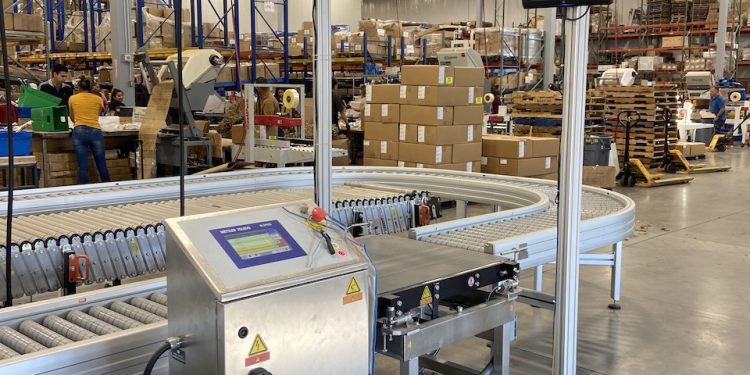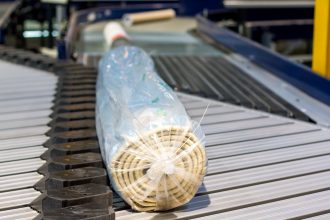How SLAM Saves on Shipping Costs

The final 100 feet of your warehouse can add up to big shipping savings.
Warehouses have been scanning, labeling, applying, and manifesting (SLAM) for years. It’s just in the past decade or so, however, that companies are recognizing the cost benefit of automating this final 100 feet of operations with SLAM equipment. COVID disruptions and the rapid ramp up of e-commerce only served to focus more attention in the SLAM area, and now companies are adopting the equipment needed to optimize this vital area of the warehouse. Right off the top, you stand to reduce labor costs associated with material handling.
Another key area to reap the benefits of an investment in automated SLAM equipment is shipping. These opportunities present in several ways, the first being the ability to move packages out the door faster with an automated final 100 feet. When your SLAM area is manual, and the rate of shipping speeds up, you risk operations slowing or even stopping if a bottleneck occurs. This used to be an area where, when things speeded up, you could simply throw more labor at it and hope to keep pace. These days, with a major labor shortage, the extra bodies just aren’t available. Automation has to step in and take over, and SLAM is suited to keeping shipping on the move.
Another way that SLAM equipment can save on shipping costs is by allowing you to right size all your packaging to the item inside. Without automated dimensioning and weighing equipment, you’re often grabbing boxes, adding items for shipment, and then filling the space with void materials. This is wasted size and weight, and adds up to more costs from your carrier partners. Instead, by using automated SLAM equipment, you can produce the exact size box for the products you’re shipping. When carriers measure and charge for your box’s dimensions, you’ll only be paying for that size—not empty space. Along those lines, SLAM equipment can help you reduce some parcel shipping from boxes to bags, providing even more savings. Think of shipping a t-shirt, for instance: in a box, there’s plenty of wasted space and associated extra costs. In a bag, you’ve got no wasted space and no extra costs.
SLAM equipment also helps you avoid common chargebacks from carriers due to errors made during both the dimensioning and the labeling processes. The equipment verifies the accuracy by parity checking the shipping label to the order ID, and/or verification of weight by a checkweigher. You are assured the labels are getting your parcels onto the right trucks and headed in the right direction. The same with chargebacks due to incorrect weighing or dimensioning—SLAM will help you avoid any of those penalties. SLAM will also sort by carrier, by weight, or by region/zone to ensure it’s headed to the best, fastest or cheapest route.
Finally, SLAM systems make it easy to use rate shopping software, which uses dimensions and weights to find the lowest rate across multiple carriers for every package. The software automatically decides the optimal shipping option for each shipment, creating the appropriate labels in real time. This leads to the lowest possible rate for your shipping.
To learn more about MHI’s SLAM industry group: www.mhi.org/slam
More information about Scanning, Labeling, Applying, Manifesting:
Prevent Chargebacks Via SLAM Equipment
Why SLAM Should Include Dimensioning Equipment
Handling Every Type Of Packaging
Best Practices For The Last 100 Feet Of Fulfillment
Why A Vertical Reciprocating Conveyor Can Play A Critical Role …



